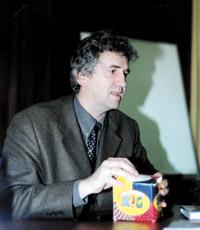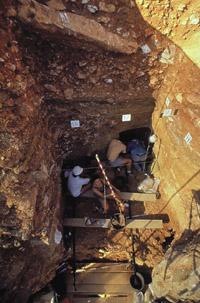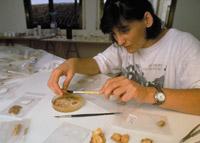Juan Luis Arsuaga: Paleoanthropologist voted

Are there many types of anthropologists? Is it the same person who works at the site and works in the laboratory?
There are many anthropologists inside the classroom. But this has its explanation: in the excavations there are no human remains. It's common. Therefore, working for 25 years in caves is not logical. On the contrary, horses or looking for them will find themselves a little before or after. Looking for human remains is very difficult. Which cave is chosen? The process is usually reverse. When someone finds fossils he calls the anthropologist.
The ancient anthropologists did everything... go, induce, discover... and along the way collect mushrooms and investigate mycology. I like these kinds of scientists. But at that time there was no specialization.
But that has disappeared, right?
Yes. We now distinguish between "bataduna" and "botaduna" anthropologist. Little by little the anthropologists became coats, which had the bones very well on the table, but they did not stain. I am voted and participate in excavations.
Is there any method to search for deposits?

Yes, but there is no method to find human fossils. It is lottery. There are methods to look for the traces of human action, but there is no certainty of finding anything. There should be no human fossils. The deposits may contain herbivores dragged and eaten by man, preys of carnivores and remains of carnivores. Bear in mind that carnivores predominate in the caves. The human being must be trapped by the carnivore and transferred to the hole. Moreover, human burial rites have been performed in caves. But it is quite rare.
Is the cave necessary to fossilize the bones?
Here in Europe yes. In the caves there is a good production of cements due to the human presence. Therefore, most of the deposits are found in caves. Sometimes fossils have been found in the rivers, called “terraces”. But they are usually remains transported by water. They also accumulate in lakes, but here there are no big lakes for this to happen. Most are in caves.
Why are bones fossilized and not other tissues?
What happens is that, despite the right conditions, the other types of tissues rot. Bone is mineral. Calcium carbonate and phosphate. The blood carries the ions and the bones precipitate like salt. It contains virtually no organic components. The truth is that they are cells that are distributed by layers, but the final result is the accumulation of salts. When man dies the cells disappear and what remains is mineral. Subsequently, fossilized depends on soil chemistry. In very acidic soils carbonates and phosphates are dissolved. The amount of soil water is also very important.
In Germany there is a very curious case. Lances of 400,000 years ago were found, completely fossilized, including wood. It is very rare. They have been found submerged in coal, in a reducing medium. That is why they have remained whole. They are two and a half meters long and belong to the same period as the men of Atapuerca. Fortunately I witnessed this discovery.
What steps are taken since the fossil is found until it is shown in books or in the museum?
They are not many. The excavations are very slow and, after the extraction of the bones, they must be restored and sometimes compacted. This process is very long, especially because the bones are often in very bad shape. From there comes the study. Bone is an object of study. Extraction of information. It is also necessary to analyze the “context”.
Is bone dating done immediately?
If they are modern, it can be done directly because they contain organic matter and the technique of carbon 14 can be used. If they are old you can get an approximation to the dating. We use uranium isotopes and electrothorn resonance. They are not exact dates. Sediments, animals and plants in the area are also analyzed. If there are stalagmites, they can also be dated within a limit. There has already been a satisfactory solution to the dating problem. It doesn't mean we know everything. But in general we know when things have happened. And it is reliable.
As we go back in time?

Not always. It depends on the origin of the material. In Africa, for example, they have many volcanic levels, which makes fossils very well dated. The sediments of the eruptions are dated very precisely, much easier than carbonates. If in Europe we have had large volcanoes… At the site of Gran Dolina in Atapuerca we have been lucky for the changes in geomagnetism. Atapuerca is a limestone, but the filling between the stones is a clay in which the direction of magnetism is collected. There are many more difficult dating. Sometimes the oldest is better dated than the new.
The work of the paleoanthropologist sometimes seems excessive. A lot of information is provided from a tooth. Where is the limit of credibility?
From a tooth you can know some things. First, the species to which it belongs. Neanderthal teeth and ours are very different. It is a very clear account. I would never be equal. Food can also be studied based on tooth wear. But much further you cannot go. With the full jaw is easier. However, the management of such projects allows you to know what each expert does. But the scope is very broad. That makes work fun.
Buletina
Bidali zure helbide elektronikoa eta jaso asteroko buletina zure sarrera-ontzian











